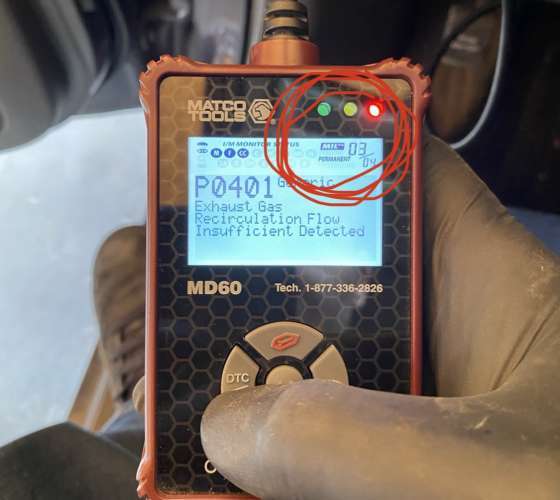You may be thinking, what is a permanent diagnostic trouble code or DTC? Well, I want to answer all that and more for you in this article.
What Is A Permanent DTC?
A permanent DTC is a trouble code that is stored permanently inside the ECU until a rational "judgment" can be completed. While this sounds complicated, do not worry; it is.
Permanent codes get stored because of the emissions laws we have. If you have trouble code, that means your Prius was non-emissions compliant, and the repair must be performed before you could pass a smog test.

Sometimes with older Prius (and other cars), you could clear the check engine light, drive the car for a little while,
and retest. You could pass if you had most of the onboard vehicle monitors "set." This trick would allow you to get sneak by and continue putting off repairing your car.
Permanent codes now keep you from doing that. Once these codes are stored, you cannot merely clear them and drive; you must make a confirmation drive pattern to ensure full functionality. This forces you to have a car that is 100% compliant with emissions.
How To Fix A Permanent DTC
With any repair you are doing in your car, you must follow up on the repair with a confirmation that the job was completed the right way.
With a permanent DTC, you must do the same. Every code you have that is stored inside the ECU has a specific drive pattern or "judgment" protocol you must follow.

For example, take a look at the requirements to clear a P0401 trouble code.
(Courtesy of © TOYOTA, LICENSE AGREEMENT TMS1002)
1. Connect the Techstream to the DLC3.
2. Turn the power switch on (IG) and turn the Techstream on.
3. Clear the DTCs (even if no DTCs are stored, perform the clear DTC procedure). Refer to DTC CHECK / CLEAR.
4. Turn the power switch off and wait for 30 seconds.
5. Turn the power switch on (IG) and turn the Techstream on [A].
6. Put the engine in inspection mode. Refer to INSPECTION MODE PROCEDURE.
7. Start the engine and warm it up until the engine coolant temperature reaches 70°C (158°F) or more [B].
HINT:
The A/C switch and all accessory switches should be off and shift lever in P or N.
8. Drive the vehicle at 25 to 37 mph (40 to 60 km/h) for 5 minutes or more [C].
9. Idle the engine for 30 seconds or more [D].
10. Accelerate the vehicle to 25 to 37 mph (40 to 60 km/h) with the shift lever in B [E].
11. Perform fuel cut operation for 5 seconds or more, with the accelerator pedal fully released [F]
Following this exact procedure will allow the computer to make a "judgment" call whether the Prius is or is not in 100% working order. If you have done the proper repair and the code clears, your vehicle is working as designed.
If not, the code will return, and you will need to continue in your diagnosis. (NOTE: This drive patter is to confirm a repair for an EGR valve code P0401 and not for any other trouble code.)
Conclusion
Permanent codes are not hard to deal with; what I stated earlier was a joke. They are complicated but not hard to clear when you know what to do. Each code stored in your Gen 3 and newer Prius has a unique "judgment" pattern that must get followed to altogether remove trouble codes stored in the computer.
A quick Google search or asking a friend that has the information will help you get what you are looking for. If you need more help with your permanent codes, feel free to drop me a line on Twitter or find me in the Prius groups on Facebook.
Thank you all for reading. I hope this helps you out. Until next time. Toyota Prius and Prius V Owners Look Out For This Recall.
strong>Watch this Toyota Prius truck with a cute little bed and click to subscribe to Torque News Youtube for daily automotive news analysis.
Peter Neilson is an automotive consultant specializing in electric cars and hybrid battery technologies. He holds a Bachelor of Science in Automotive Service Technology from Weber State University. Peter is also an Instructor of Automotive Technology at Columbia Basin College. Peter can be reached on Linkedin and you can tweet him at The_hybrid_guy on Twitter. Find his page on Facebook at Certified Auto Consulting. Read more of Peter's stories at Toyota news coverage on Torque News. Search Toyota Prius Torque News for more in depth Prius coverage from our reporters.













Comments
if a swap of immobilizer ecu
Permalink
if a swap of immobilizer ecu is made, how many other ecu need to be programed?
Answer: just the immobilizer ECU.